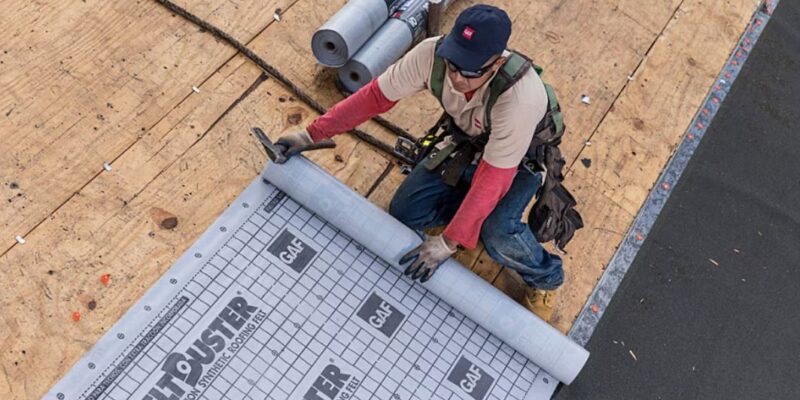In the quest for a durable and long-lasting roof, homeowners often focus on the visible elements—tiles, shingles, or metal panels. However, a critical component lies beneath, out of sight but paramount for protection: the roofing underlayment. This unsung hero of roofing plays a vital role in safeguarding homes from the unique climatic challenges of Southern California, including intense sun, heavy rainfalls, and occasional wildfires. This blog delves into the importance of underlayment, the various types available, and why Southern Californian homeowners should pay close attention to this essential layer of their roofing system.
What is Roofing Underlayment?
Roofing underlayment is a barrier installed between the roof deck (the structural base that supports your roofing material) and the outer roofing material itself. It serves several critical functions:
- Moisture Protection: It provides an additional layer of defense against water infiltration, protecting the roof deck from rain, snow, and ice damming.
- Weatherproofing: It helps shield the home from wind-driven rain and acts as an extra layer of insulation, enhancing energy efficiency.
- Fire Resistance: Certain types of underlayment offer fire-resistant properties, an essential consideration in fire-prone areas.
Types of Underlayment in Southern California
There are primarily three types of roofing underlayment, each with its benefits and considerations:
Asphalt-Saturated Felt
Traditionally used underlayment, often referred to as “felt paper,” is made from either organic or fiberglass substrate saturated in asphalt. It’s a cost-effective option offering basic water resistance but can be less durable in extremely hot climates like Southern California’s, where it may dry out and crack over time.
Rubberized Asphalt
Offering superior waterproofing and adhesive properties, rubberized asphalt underlayment is ideal for areas prone to heavy rain and wind. Its self-healing properties ensure that penetrations from nails or staples are sealed, providing an excellent defense against leaks. This type is particularly beneficial in wildfire-prone regions due to its fire-resistant capabilities.
Synthetic Underlayment
Made from polypropylene or polyethylene, synthetic underlayment is lightweight, extremely durable, and resistant to UV exposure and chemical degradation. Its high tear strength makes it an excellent choice for windy areas, and its water-resistant nature provides robust protection against rain. Synthetic underlayment is becoming increasingly popular in Southern California due to its longevity and adaptability to the region’s diverse climate conditions.
Choosing the Right Underlayment for Your Home
Selecting the appropriate underlayment for a Southern California home involves considering several factors, including:
- Climate Resilience: Choose a material that can withstand the specific challenges of your locale, whether it’s high heat, heavy rains, or potential fire threats.
- Roofing Material Compatibility: Ensure the underlayment is compatible with your chosen outer roofing material, whether it’s tiles, shingles, or metal.
- Budget and Longevity: While synthetic and rubberized asphalt underlayments may have higher upfront costs, their durability and protective qualities can offer greater long-term value.
The Foundation of a Durable Roof
Though often overlooked, the roofing underlayment is a cornerstone of a roof’s integrity and durability. Especially in Southern California, where the climate poses unique challenges, selecting the right underlayment is crucial for ensuring your home remains protected against the elements. By investing in quality underlayment, homeowners can enhance the longevity and performance of their roofing system, securing their homes against whatever weather comes their way.

